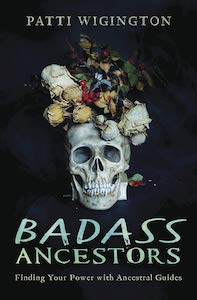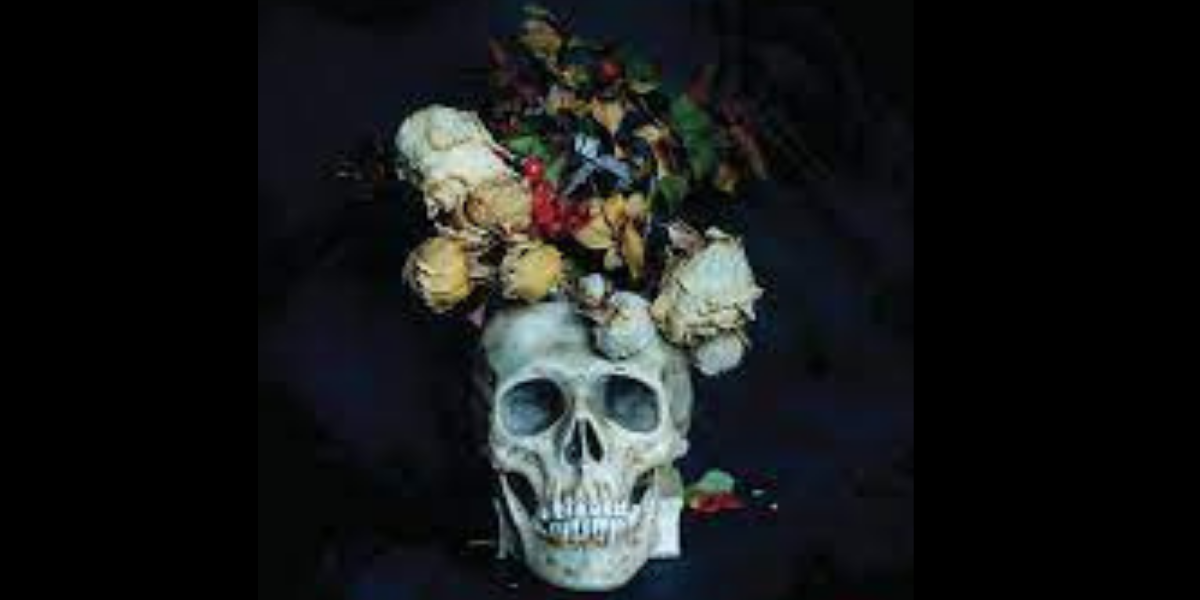
Badass Ancestors: Finding Your Power with Ancestral Guides, by Patti Wigington
Llewellyn Publications, 9780738764986, 312 pages, 2020
Within minutes of picking up Badass Ancestors: Finding Your Power with Ancestral Guides by Patti Wigington, I felt compelled to reactivate my ancestry.com account. As someone interested in working with ancestors, I found this book to be helpful in clearing away the noise and getting down to it. Wigington’s book clearly outlines the process of researching personal genealogy as foundational work to learn about one’s ancestors in a meaningful way. Building on this, the research done in finding/naming dead relatives encourages one to honor and work with them in personal practice.
The author of several books on the topic of witchcraft and Wicca, Wigington includes examples of her own application of the processes described in the book using Pagan contexts. I have an appreciation for the depth of historical research Wigington included in the book — a nod to the author’s B.A. in History. She uses her background in history advantageously, as the chapters around veneration in world cultures is thoroughly detailed and well laid out.
Wigington goes out of her way to make sure that the reader does not feel less than perfect if they don’t know their personal lineage. She understands the various challenges many people face while trying to discover their personal ancestral background and offers concrete resources and processes to help find answers. Her step-by-step process of using various websites to collect data and using charts and spreadsheets to keep track of it all might seem a bit daunting at first, but it quickly becomes clear that her suggestions work and make the task of discovering and cataloguing ancestors a bit less arduous.
She begins the journey by explaining various practices around the world, effectively linking different cultures to show how connected we are as a species. This leads beautifully into the chapters dealing with finding your own people and building an altar so you can work with them, and also contains various meditations and rituals for both honoring and working with the ancestors you choose to involve in your practice. I have to admit though, I jumped ahead of all of that to get to one chapter in particular: “Problem Ancestors – You Can’t Choose Your People. “
In this chapter, Wigington tackles the very delicate subject of ancestors who might be very powerful and well positioned to provide assistance, but due to their actions in life might not be welcome at your table. She is remarkably open when speaking about her own personal ancestors and the lasting effect their actions have taken on her family, which is encouraging for those who are curious about their lineage but might not be ready for what they find. On a personal note, I found this chapter to be one of the best as I have struggled with the ethics of working with ancestors based on what they have left behind as their legacy. It’s not always great, and Wigington reminds us that, much like how we can choose to deal with the living, engaging with the dead is a personal choice that we are each free to make for ourselves.
Throughout the book, Wigington provides a variety of sample rituals that could be used to call in ancestors, honor them, or just thank them for being part of the family. I subscribe to the belief that one person’s rituals might not work for another, but I could absolutely see how these would be effective in approaching ancestors with a view to building a relationship. Understanding that respect is key is helpful to those who might not be fully aware of what they are potentially getting themselves into.
While the book is appropriate for anyone who might be interested in contacting and working with ancestors, certain sections seem to be aimed towards those just beginning their journey, while others are clearly meant for those who have established solid relationships and want to deepen their connections. There is also a section of recipes that could be used when providing offerings to ancestors based on some rough cultural assumptions and time periods, which I highly appreciated as it gives a good starting point for those just entering into this practice.
While ancestral work itself isn’t necessarily light and fluffy, the topic of personal legacy and arrangements to be made for our own demise is not usually discussed or included, and I firmly believe it should be. I was delighted to find the final chapter titled “Your Badass Legacy” deals with things like providing clear funeral instructions including a living will, keeping detailed journals, and things of that ilk to help your descendants understand your life. Subsections on knowledge sharing, family heirlooms, journals and diaries, and recipes and traditions all provide excellent suggestions on how to get started building a snapshot of your life for future generations. Wigington even includes a piece about digital legacy, something that anyone with a Facebook page or Twitter account needs to take into consideration when end of life planning.
Wigington does a remarkable job of navigating the various levels of knowledge and provides an incredible amount of information in a way that is not overwhelming. I have been researching my family on and off again for some time and was happy to see that the resources cited pretty much matched what I’d discovered. Having said that, there is so much in this book that I didn’t know and I appreciated the opportunity to learn new things.
One thing in particular that leaped out at me was the idea of appealing to archetypes instead of actual ancestors when you can’t find your people. For me, the idea of substituting an idea of an ancestor in place of the actual ancestor was eye opening. I have been struggling for years to figure out how to fill in the gaps on my father’s side, since I have no contact with that side of my family and no way to get information. Using her suggestion of researching archetypes from my genetic heritage was brilliant and helped me to finally stop feeling like I’d failed by not being able to fill in those gaps on the tree.
This book really introduced me to how I could work with my ancestors, despite not knowing who they are or where they might be from, and gave me a foundation upon which I can create my own ancestral practice moving forward. One of the better books on this topic, I would recommend Badass Ancestors for anyone wanting to start building relationships and connecting with their ancestors in a low stress and highly effective way.

Sarrah October Young is a writer and practising witch who wished she could do stand-up comedy. When she isn’t writing or witching, she can be found posting about her cats on IG @therealoctober.
